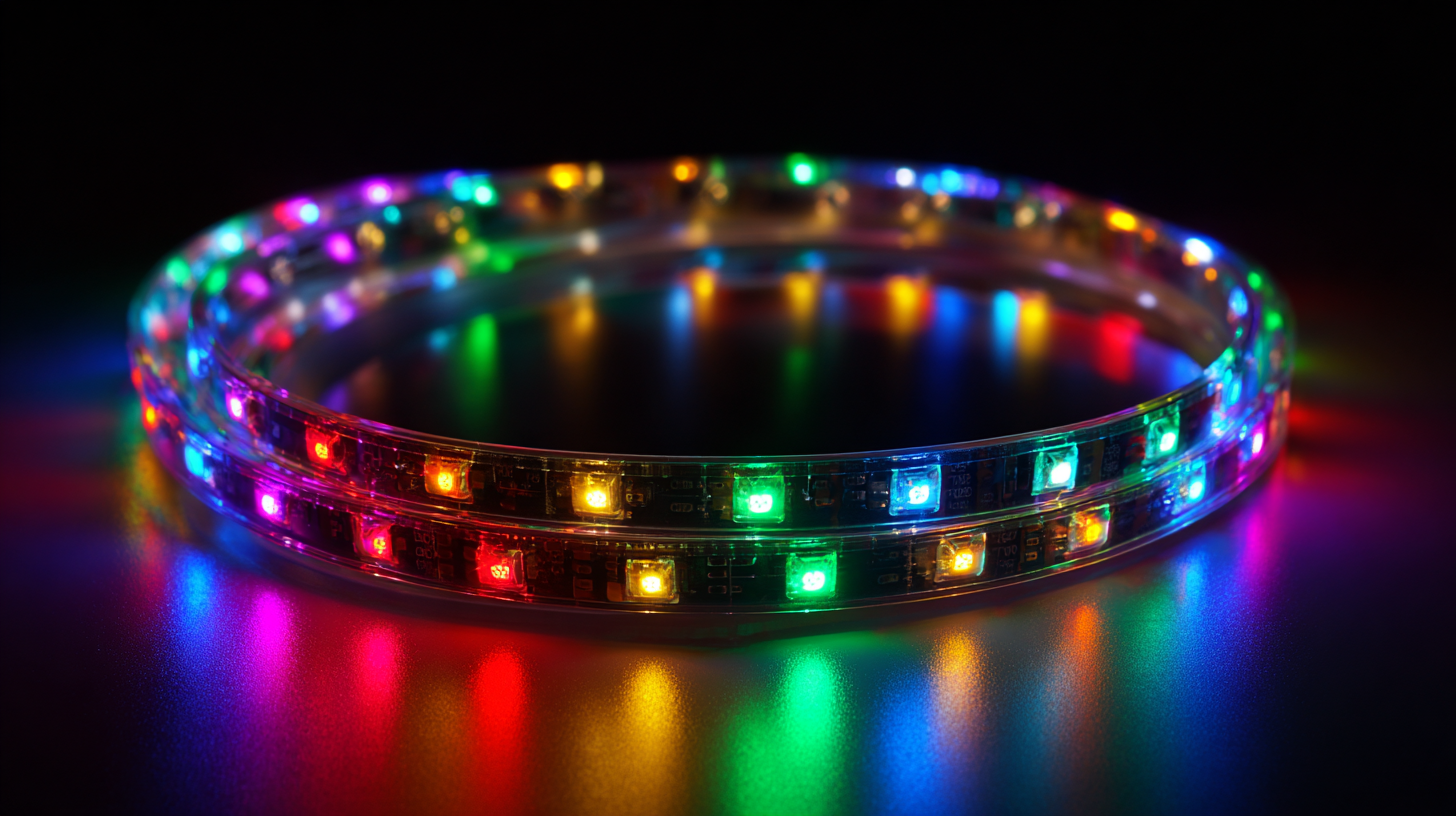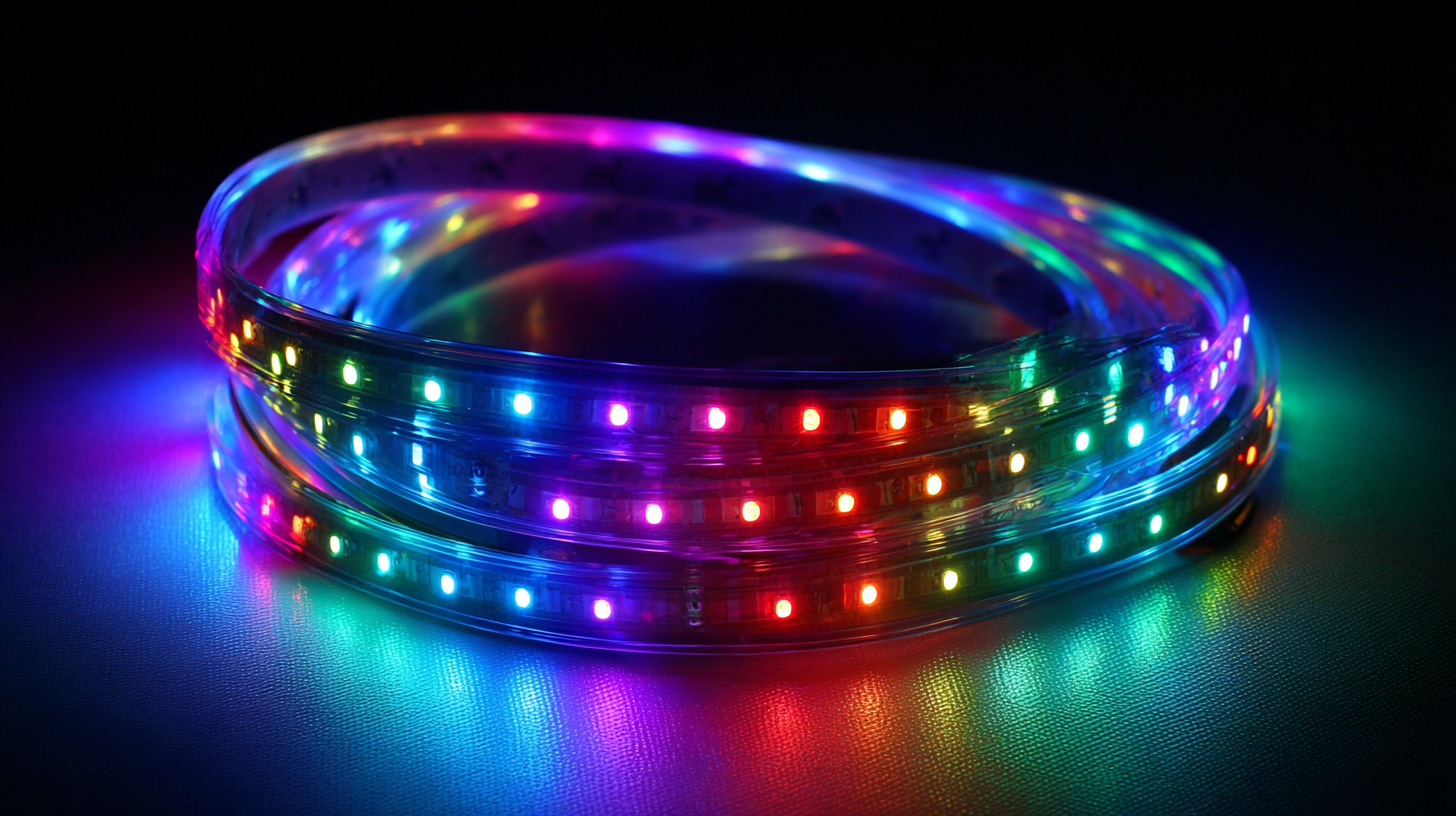Edison LED Lighting
Projects
How to Choose the Best LED Strip for Your Lighting Needs Based on Performance Data
When it comes to enhancing your living space or workspace, LED strips have emerged as a versatile and energy-efficient lighting solution. Their ability to adapt to various environments, combined with their stunning array of colors and brightness levels, makes them an ideal choice for both decorative and functional purposes. However, not all LED strips are created equal; selecting the best one requires a careful evaluation of performance data, such as brightness, color temperature, and longevity.

In this blog, we will delve into the key benefits of various types of LED strips and provide insights on how to choose the perfect option that caters to your unique lighting needs. Whether you're illuminating a cozy nook in your home or setting the mood for an event, understanding the performance specifications will empower you to make a well-informed decision that enhances your space with the right LED strip.
The Importance of Lumens in LED Strip Selection for Optimal Brightness
When selecting an LED strip, one of the most crucial factors to consider is the lumen output. Lumens measure the amount of visible light emitted by a source, making them essential for determining how bright the LED strip will be in a given space. When shopping for LED strips, it’s important to understand that not all products are created equal; some may offer higher lumens per watt, leading to brighter lighting while remaining energy-efficient. Knowing the required lumens for your specific application—be it task lighting, ambient lighting, or accent lighting—ensures that you choose the right strip to meet your needs.

Another key element in evaluating lumens is the intended use of the lighting. For example, areas requiring focused light, like workspaces or kitchens, benefit from LED strips with higher lumen outputs, often in the range of 1000-2000 lumens per meter. On the other hand, for decorative purposes or subtle ambient lighting, lower lumens, around 300-800 lumens per meter, can create a warm and inviting atmosphere. By carefully assessing the lumen requirements based on your specific light usage, you can better select an LED strip that not only illuminates your space effectively but also enhances the overall aesthetic and functionality of the environment.
Evaluating Color Temperature: Understanding Warm vs. Cool White Light for Your Space
When selecting LED strips for your lighting needs, it’s essential to consider color temperature, which significantly affects the ambiance and functionality of a space. Color temperature is measured in Kelvins (K). Warm white light, typically between 2700K and 3000K, creates a cozy, inviting atmosphere, making it ideal for living rooms and bedrooms. In contrast, cool white light ranges from 4000K to 5000K, offering a more energizing effect suitable for workspaces, kitchens, or areas where tasks requiring high visibility are performed. According to the Lighting Research Center, environments with cool lighting can enhance productivity and alertness, demonstrating the importance of appropriate color selection based on the intended use of the area.
Moreover, understanding the visual impact of these color temperatures is critical. A study by the National Institute of Standards and Technology reveals that lighting with higher color temperatures can improve attention and cognitive function, suggesting that cooler lights could be advantageous in educational environments and offices. Conversely, retailers often utilize warm white lighting to evoke comfort and stimulate purchases. By carefully evaluating and selecting the LED strip color temperature, you can significantly influence both the aesthetic and functional performance of your space, ensuring it meets both personal preference and practical requirements.
How to Choose the Best LED Strip for Your Lighting Needs Based on Performance Data - Evaluating Color Temperature: Understanding Warm vs. Cool White Light for Your Space
| LED Strip Type | Color Temperature (K) | Lumens per Meter | Watts per Meter | Usage Recommendation |
|---|---|---|---|---|
| Warm White | 2700K | 300 | 8 | Living Rooms, Bedrooms |
| Cool White | 5000K | 400 | 12 | Kitchens, Workspaces |
| Neutral White | 4000K | 350 | 10 | Office, Retail Spaces |
| Daylight White | 6500K | 500 | 14 | Bathrooms, Workshops |
Efficiency Matters: How to Analyze Watts Per Foot for Energy Consumption
When choosing the best LED strip for your lighting needs, analyzing the watts per foot is crucial for understanding energy consumption. According to the U.S. Department of Energy, the efficiency of LED lighting can surpass traditional incandescent bulbs by up to 80%, making them a far more energy-efficient option. On average, high-quality LED strips consume about 0.2 to 0.4 watts per foot, while typical incandescent lights use 0.5 to 2.0 watts per foot. This difference not only affects your electricity bill but also impacts the longevity and environmental footprint of your lighting solutions.
Tip: When selecting LED strips, look for those that provide labeled wattage ratings in their specifications. This will enable you to make an informed choice based on your energy efficiency requirements. Additionally, consider the application of your strips; for accent lighting, a lower watt per foot may suffice, while task lighting might benefit from higher output.
Furthermore, performance data from energy efficiency studies suggest that LED lights can retain up to 70% of their initial brightness after 25,000 hours of use compared to incandescent bulbs, which lose considerable brightness over time. By focusing on watts per foot, you can ensure that your lighting is not only effective but also sustainable over the long haul.
Tip: Always check for certifications like Energy Star when choosing LED strips; these products have passed stringent tests assuring their energy efficiency and performance reliability.

Understanding CRI: Ensuring Accurate Color Rendering with Your LED Strips
When selecting LED strips for your lighting needs, understanding the Color Rendering Index (CRI) is crucial. CRI is a measure of how accurately a light source displays colors in comparison to natural light. A higher CRI value, generally above 80, indicates that the LED strips can reproduce colors more faithfully, making them ideal for applications where color accuracy is essential, such as in art studios, retail spaces, and photography.
Incorporating LED strips with an optimal CRI value can significantly enhance the aesthetics of any space. For instance, in a gallery setting, lighting that highlights the true colors of artwork can make a substantial difference in the viewer's experience. Similarly, in a retail environment, accurate color rendering can influence purchasing decisions, as customers are more likely to be attracted to products that appear vibrant and true to life. Therefore, while evaluating LED strips, don't just consider brightness and energy efficiency; ensure that the CRI aligns with your specific lighting requirements for the best overall results.
Durability and Lifespan: Choosing LED Strips with Reliable Performance Data
When choosing LED strips for your lighting needs, it's essential to prioritize durability and lifespan, as these factors correlate directly with the performance data provided by manufacturers. Reliable performance data is crucial in assessing how long your LED strips will last and how well they can withstand various conditions.
Recent reviews have emphasized the issues that can limit the reliability of LEDs, particularly those based on gallium nitride technology, where defects and performance variances play significant roles. Thus, selecting products with verified endurance ratings and thorough testing history can help ensure that your investment will withstand the test of time.
Furthermore, early claims of 50,000 to 100,000-hour lifespans for LED bulbs may cause confusion among consumers today. As technology progresses, it is vital to rely on updated performance data to make informed decisions. Investigating product specifications, customer reviews, and third-party testing can provide insights into the actual performance and longevity of the LED strips you're considering. By focusing on these factors, you can effectively choose LED strips that not only meet your lighting requirements but also deliver lasting satisfaction and efficiency.
